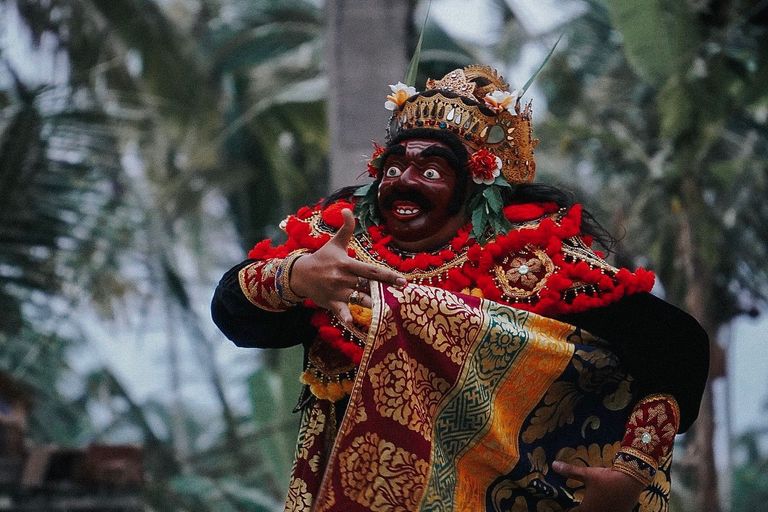
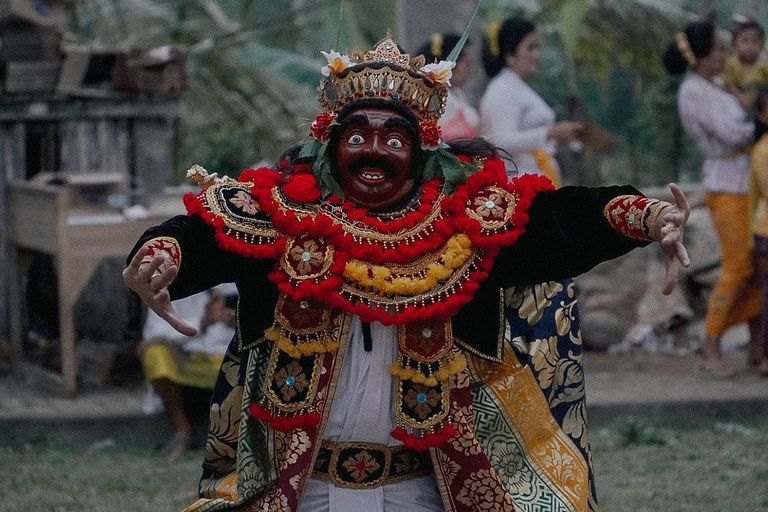
hello all blurt friends, today I am again posting some of the beauty of traditional art and culture in my area, today I will post the beauty of the Balinese mask dance
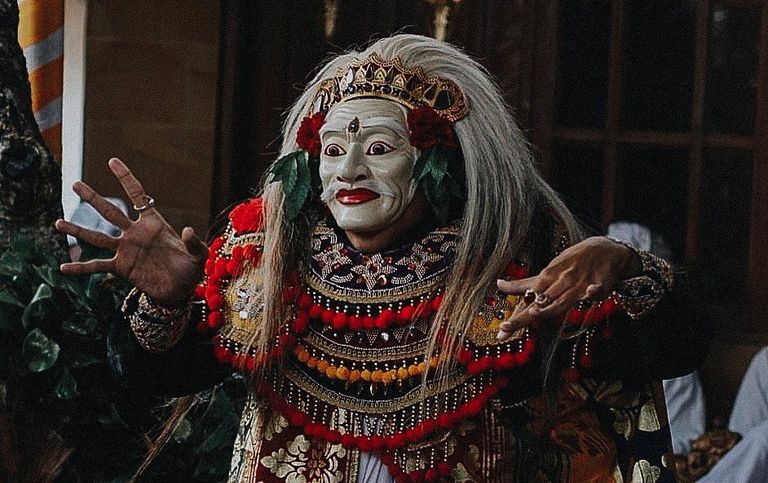

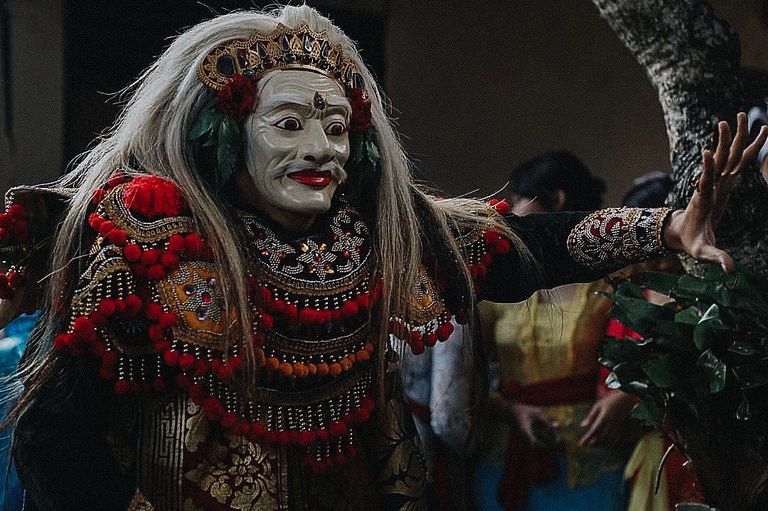
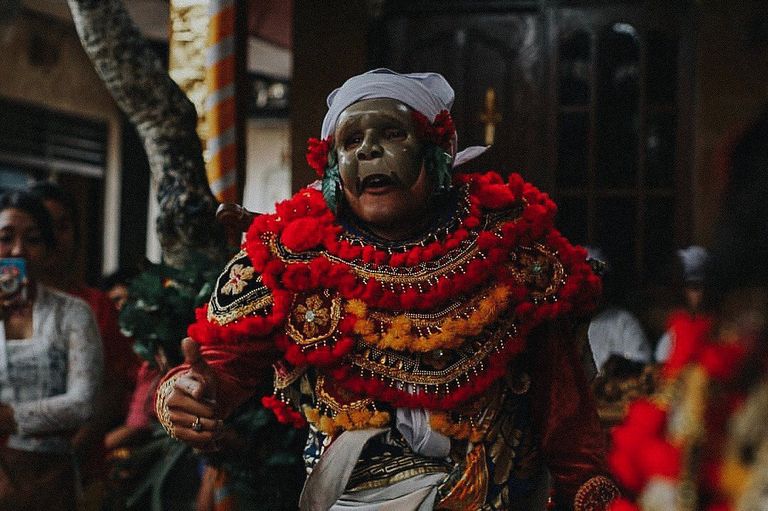
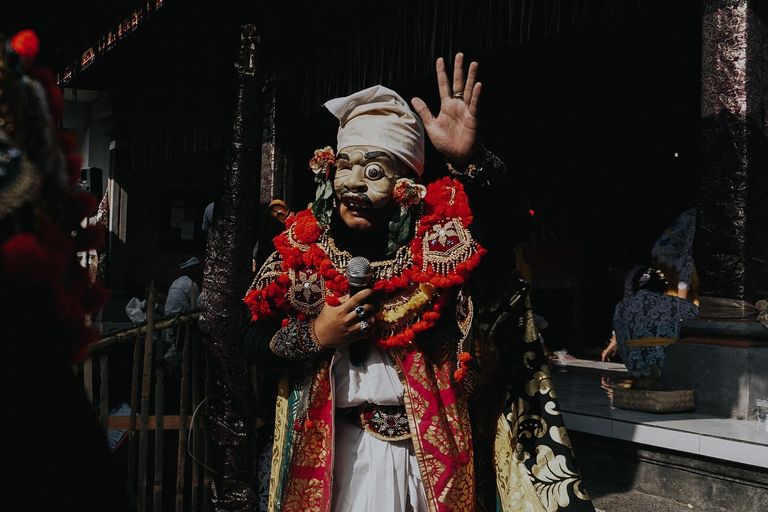
We are all familiar with the mask. This is a face covering that is often used as a toy, entertainment, display, and so on. They are made of various materials, ranging from paper, wood, to clay. Some are in the form of humans, animals, spirits, and others.
One of the areas whose culture is well known abroad is Bali. This island of the gods has an unquestionable unique art. This makes Balinese art can last a long time and be known to foreign countries.
Mask art is one of the most well-known Balinese arts. Mask art is included in sculpture when viewed from its manufacture. However, this art is also included in the performing arts because Balinese dance generally uses masks for props.
Mask art in Bali has existed since prehistoric times. Mask art is found in people who believe in animism and dynamism. Mask dances and masks as displays are usually seen as repellent to reinforcements, curing disease, bringing down rain, and so on.
Balinese masks are generally made of ylang wood and pule wood. There are several stages of sculpting that must be passed because of certain standards in describing the character of the mask made. This makes the mask makers must have special skills to create a good mask.
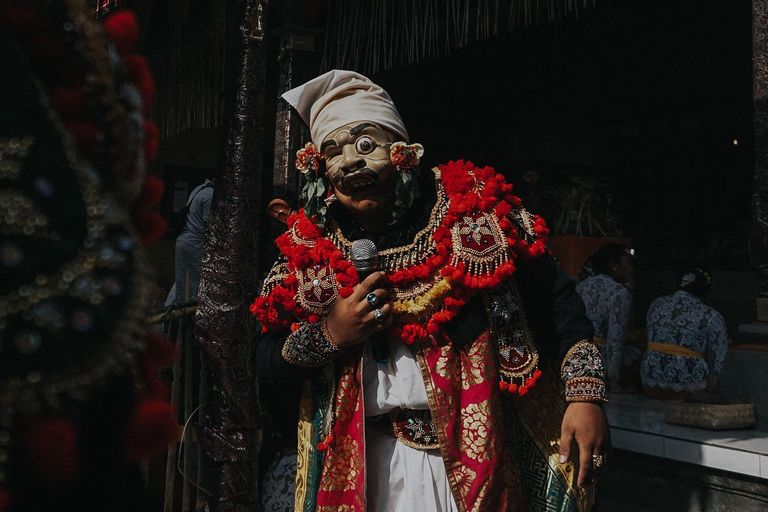

The art of Balinese mask dance has existed since the reign of King Jaya Pangus around the X century. This is stated in the collection of Jaya Pangus inscriptions which state that there are performances that use masks or face coverings. The Blantih inscription (1059 AD) also reveals that masks are well known and widely used for performances.
Another, there is the Snake Plasraya inscription which states that when the reign of Dalem Waturenggong in Gelgel (1460-1550) conquered the Blambangan Kingdom, several items were confiscated, one of which was a mask chest.
Mask dance is not just entertainment on stage. The meaning of Balinese mask dance is so deep and contains its own meaning.
Most mask dances in Bali contain local knowledge. Generally, the stories come from historical narrations or legend stories. It can also tell the history of the royal lineage that is presented in scenes from everyday life.
Balinese mask dances can also tell about efforts to conquer another kingdom or attempt to evacuate someone. Later, there are those who play the opposing kingdom by wearing strange and unusual costumes or guises. There was also the appearance of players in funny costumes whose job it was to attract admiration and laughter from the audience.
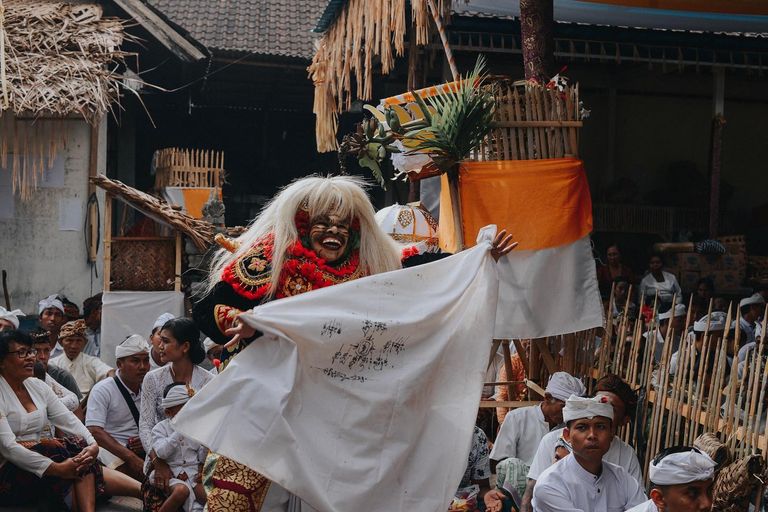
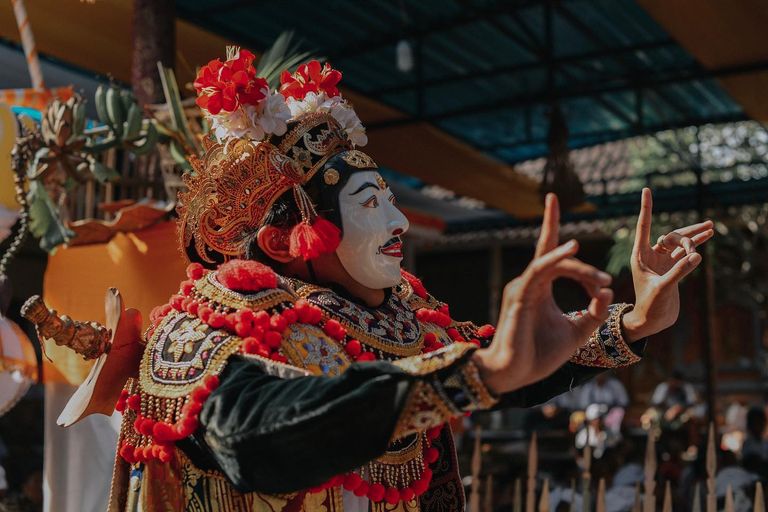
Mask dances in Bali can be seen on certain days. An example is the mask of Sang Hyang Dedari or Sang Hyang Legong. The dance will be performed in the village of Ketewel, Gianyar, on the Pagerwesi holiday. There is also a Brutuk or Betara Brutuk mask dance which is staged in Trunyan Kintamani Village.
Thank you.